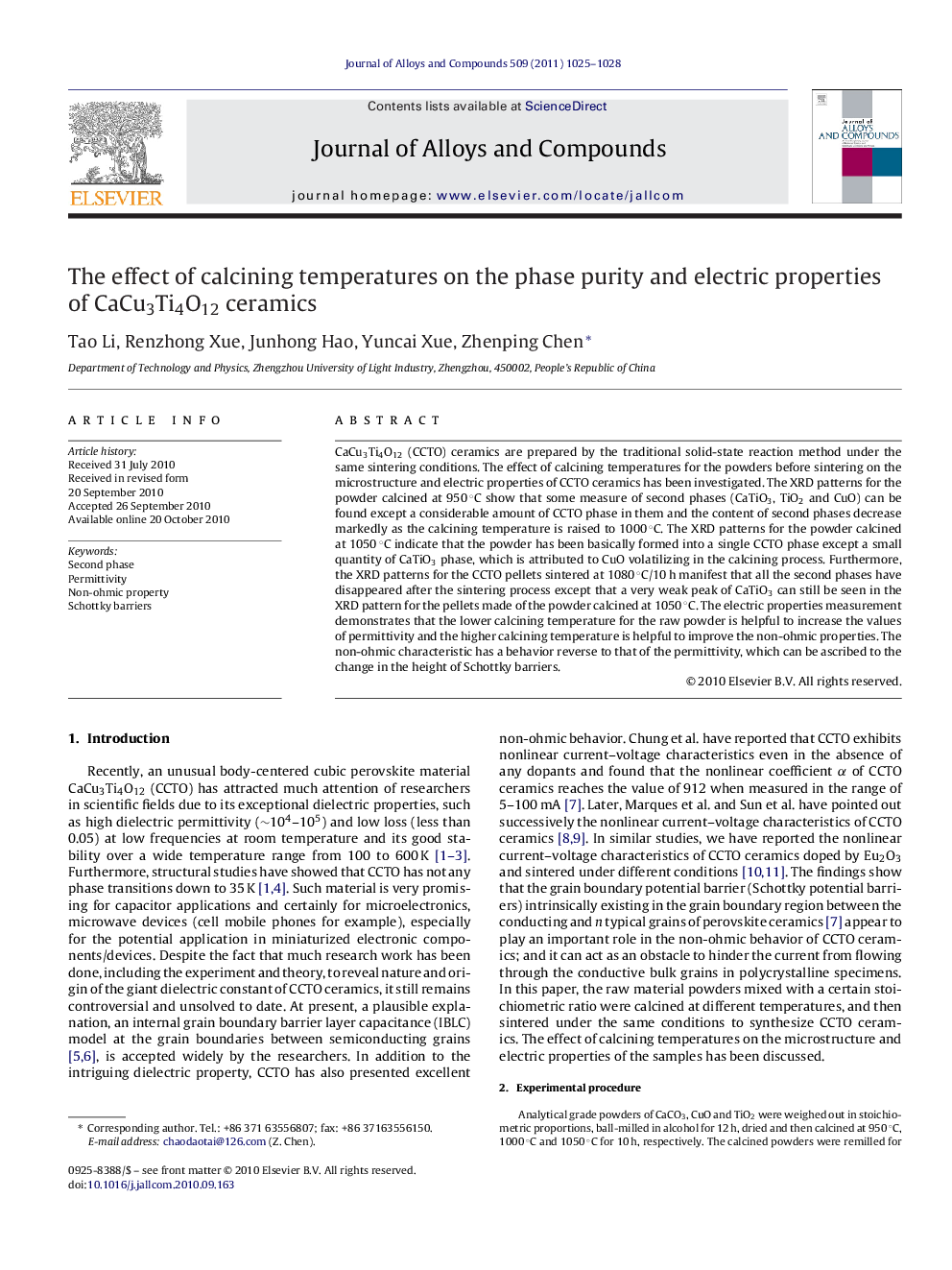| کد مقاله | کد نشریه | سال انتشار | مقاله انگلیسی | نسخه تمام متن |
|---|---|---|---|---|
| 1618866 | 1005712 | 2011 | 4 صفحه PDF | دانلود رایگان |

CaCu3Ti4O12 (CCTO) ceramics are prepared by the traditional solid-state reaction method under the same sintering conditions. The effect of calcining temperatures for the powders before sintering on the microstructure and electric properties of CCTO ceramics has been investigated. The XRD patterns for the powder calcined at 950 °C show that some measure of second phases (CaTiO3, TiO2 and CuO) can be found except a considerable amount of CCTO phase in them and the content of second phases decrease markedly as the calcining temperature is raised to 1000 °C. The XRD patterns for the powder calcined at 1050 °C indicate that the powder has been basically formed into a single CCTO phase except a small quantity of CaTiO3 phase, which is attributed to CuO volatilizing in the calcining process. Furthermore, the XRD patterns for the CCTO pellets sintered at 1080 °C/10 h manifest that all the second phases have disappeared after the sintering process except that a very weak peak of CaTiO3 can still be seen in the XRD pattern for the pellets made of the powder calcined at 1050 °C. The electric properties measurement demonstrates that the lower calcining temperature for the raw powder is helpful to increase the values of permittivity and the higher calcining temperature is helpful to improve the non-ohmic properties. The non-ohmic characteristic has a behavior reverse to that of the permittivity, which can be ascribed to the change in the height of Schottky barriers.
Research highlights▶ In this paper, the effect of calcining temperatures for the powders before sintering on the microstructure and electric properties of CaCu3Ti4O12 (CCTO) ceramics has been investigated. ▶ The XRD powder patterns for the powder 950 °C calcined show that some measure of second phase (CaTiO3, TiO2 and CuO) can be found except a considerable amount of CCTO phase in them. ▶ The content of second phase decreases with the increase of calcining temperature. ▶ As the calcining temperature is raised to 1050 °C, the powder is basically formed into a single CCTO phase except a small quantity of CaTiO3 phase because of the volatilization of CuO in the calcining process. ▶ The electric properties measurement demonstrates that the lower calcining temperature for the raw powder is helpful to improve the values of permittivity and the higher calcining temperature is helpful to the non-ohmic properties. ▶ The non-ohmic characteristic has a reverse behavior with that of the permittivity, which can be ascribed to the change of the height of Schottky barriers.
Journal: Journal of Alloys and Compounds - Volume 509, Issue 3, 21 January 2011, Pages 1025–1028